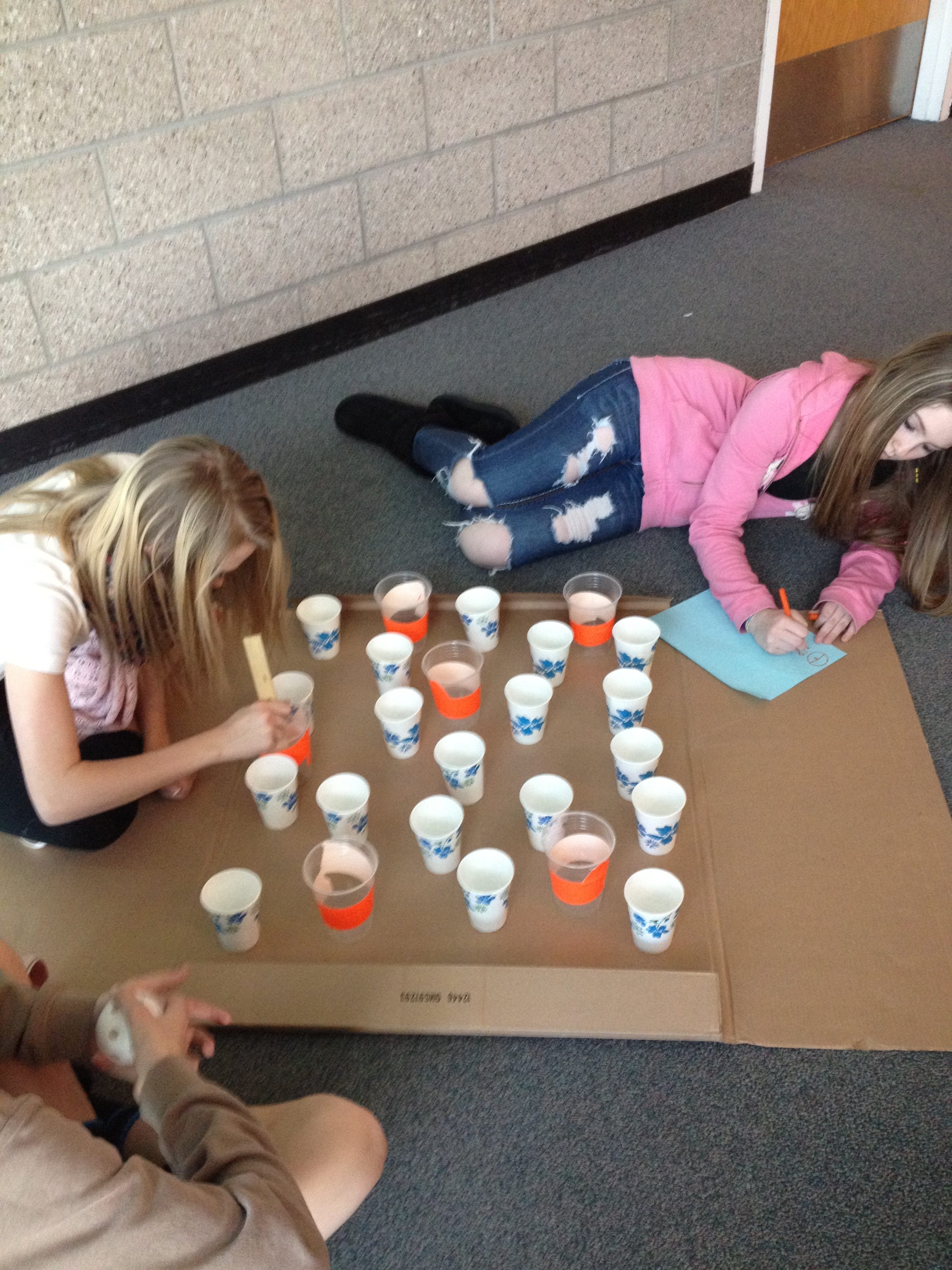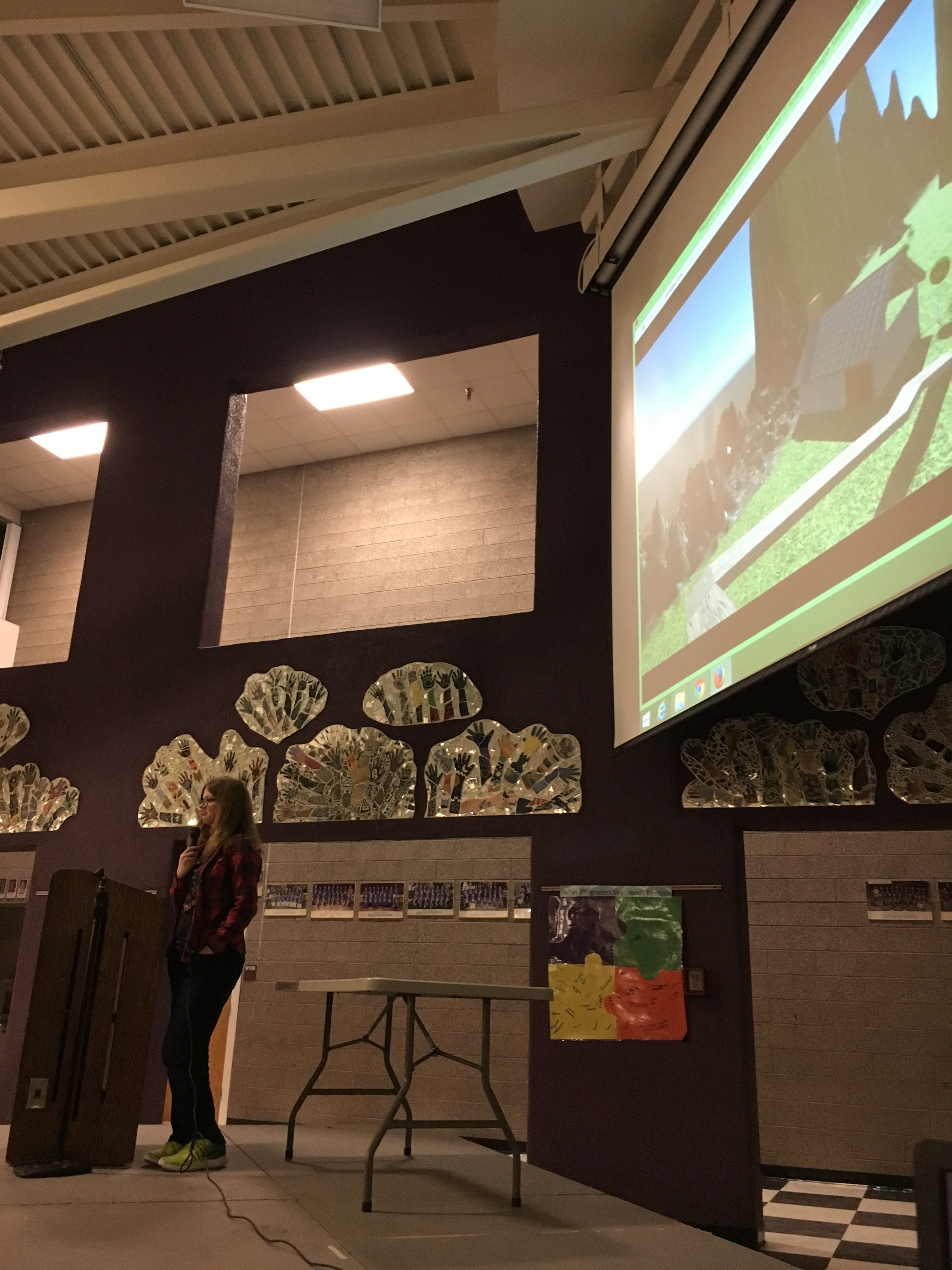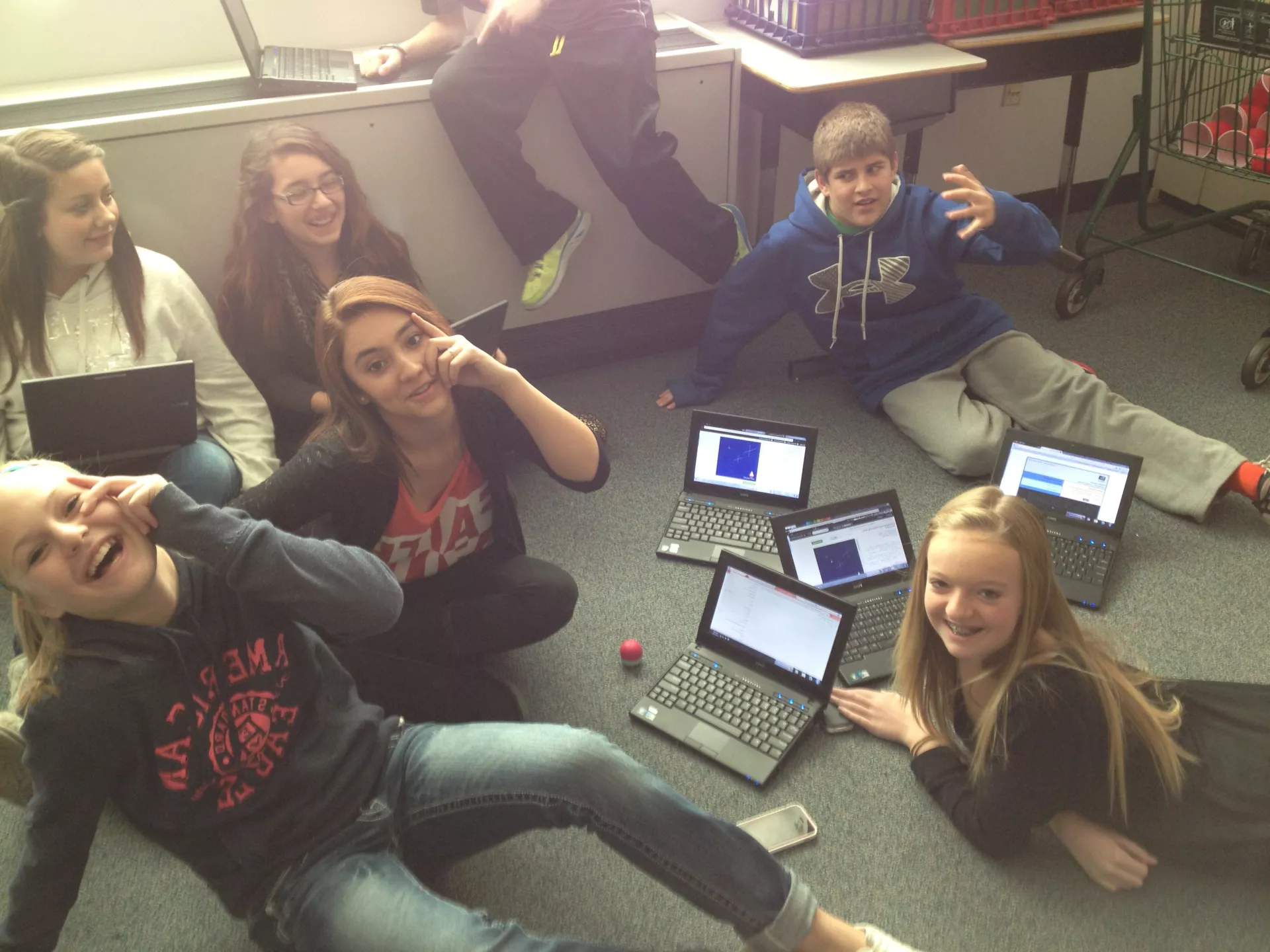Is there anything more satisfying than making something creative? A quilt, a webpage, a decoration, an invention? As a child, do you remember the pride you felt when you showed your parents a LEGO creation or a fairy house or even a mud pie?
Creativity belongs everywhere, not just in childhood games and extracurriculars. It involves all of your senses and creates new knowledge that didn’t exist before. Students of all ages need to learn by creating - it helps to synthesize information and bring joy and meaning into their educational experience.
 Students pause to be silly while making symmetrical designs with technology.
Students pause to be silly while making symmetrical designs with technology.
A few years ago, one of my colleagues in seventh-grade math adapted a textbook project for a unit on probability. The students created carnival games, calculated the probability of winning their own games, tested the games, and ran a carnival as a school fundraiser. This project became a school institution, and we continue to celebrate “pi day” every year with a schoolwide math carnival. Students put in many hours, both inside and outside of school, to work on their carnival games - beanbag tosses, ducks in a pool, spinners, computer games, and marble mazes lend themselves to creativity and rigorous thinking.
The students learn the fundamentals of probability, but they also work together to come up with correct pricing and prizes. They make their displays colorful and engaging. Many students work hard to make the games sturdy yet portable. The learning extends well beyond mathematics - students are empowered by the experience of presenting their games and then manning the booth and running the fundraiser. When students come back to visit me after they have left middle school, this is the project they talk about and remember.
 Calculating area to find the probability of winning a ball toss game the students created themselves.
Calculating area to find the probability of winning a ball toss game the students created themselves.
This is just one example of how I’ve seen teachers use the power of creativity. My co-workers teach trigonometry by asking students to design a video game that shoots a bullet at certain angles. Students learned about Africa and economics by designing a transportation system that crosses the continent. And they learned about percents by creating a virtual store in the Scratch programming language. In each of these instances, the learning involved showing evidence of understanding a core concept, but extended well beyond that concept - design thinking, time management, teamwork, and presentation skills also came into play. A young person’s schooling should make creativity a priority - kids need it in order to synthesize their learning and enjoy doing it.
In addition to creating, students also need to share their ideas with the world. Open the doors to your classroom to host a parent night, invite other classes in to see yours, or bring in volunteers and community members. One exciting structure I’ve seen is a “Shark Tank” project, in which students investigate a problem, design an invention to solve the problem, and present their solution along with a business plan to “sharks” who are community members. The students love presenting to this authentic audience and having their projects scored by the sharks. Your students will learn to be leaders and ambassadors, and they’ll be the ones selling new educational ideas to your building leadership and school board.
 Giving a TED-style talk to present a way to get over your fear of heights: a student-created Virtual Reality game.
Giving a TED-style talk to present a way to get over your fear of heights: a student-created Virtual Reality game.
Creating a project-based assessment can be intimidating. The most successful projects I’ve seen have very clear success criteria and learning objectives. Consider what evidence you would accept that would tell you the students learned a concept or skill. That evidence should be noticeable in the final project. Don’t constrain the project too much, however. Students should have freedom to display the evidence of learning in ways you might not anticipate. They should also have the ability to go above and beyond - you’ll be surprised at how many make that choice. Instead of asking students to create a house blueprint with your measurements and using your template, consider asking them to design a building, demonstrate that they understand the concepts of perimeter, area, and unit price, give them a few suggestions and then see what they come up with? They might create a skyscraper out of cardboard, 3-D print a house from TinkerCad or make one in Minecraft before tackling the math, and the math will be more meaningful in their own creation.
The most important reason to teach with creativity is one that is rarely assessed but is key to a child’s educational success: they’ll love school. Making things is joyful. Learning a new skill, collaborating and creating something meaningful is satisfying, happy work. Try committing to a creative project-based assessment for half of the units you teach. I tried this by incorporating computer coding projects into a middle school math class, and the days filled with coding were the most fun I’ve had as a teacher. Students spread out around the room, played with color and text and animation, learned math while socializing and high-fiving… and I loved my job that year. Every day, I looked forward to it. I finished each day happy and exhausted. You have a right to enjoy your job, and your students have a right to enjoy being at school. It is a worthy end in itself that does not have to be justified with test score improvements.


